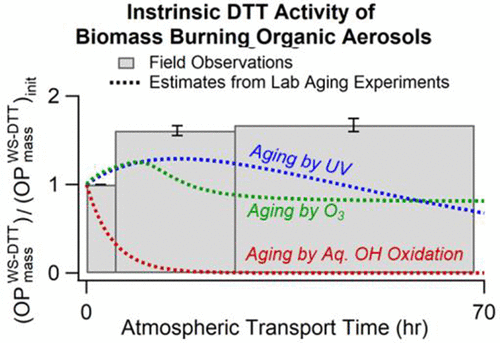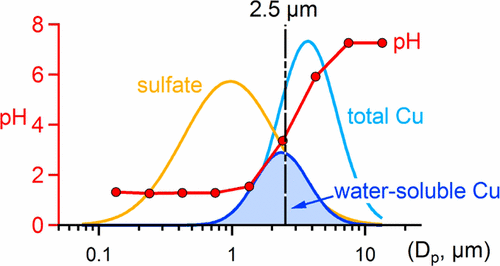Oxidative potential
One of the leading hypotheses regarding the mechanism of adverse cardiopulmonary health effects induced by particulate matter (PM) is the oxidative stress mediated by reactive oxygen species, which can be generated from reactions among PM components and antioxidants in the lung. One way to quantify the magnitude of PM oxidative potential is by using dithiothreitol (DTT) assays. This technique has been used to study oxidative potential of ambient particles in field studies, and also how oxidative potential changes under controlled laboratory aging experiments.

Particle acidity and bioavailable transition metals
Other hypotheses suggest that particle acidity or transition metal content of particles are responsible for a major portion of PM2.5 health impacts. A study involving LAPI members highlighted a link between acidity and solubilization of several transition metals, which increases bioavailability and possibility for uptake.

Selected references.
- Wong et al., Effects of Atmospheric Processing on the Oxidative Potential of Biomass Burning Organic Aerosols, Environ. Sci. Tech., 53, 12, 6747-6756, 2019.
- Paraskevopoulou et al., Yearlong variability of oxidative potential of particulate matter in an urban Mediterranean environment, Atmos. Environ., 206, 183-196, 2019.
- Fang et al., Highly Acidic Ambient Particles, Soluble Metals, and Oxidative Potential: A Link between Sulfate and Aerosol Toxicity, Environ. Sci. Tech., 51, 5, 2611-2620, 2017.